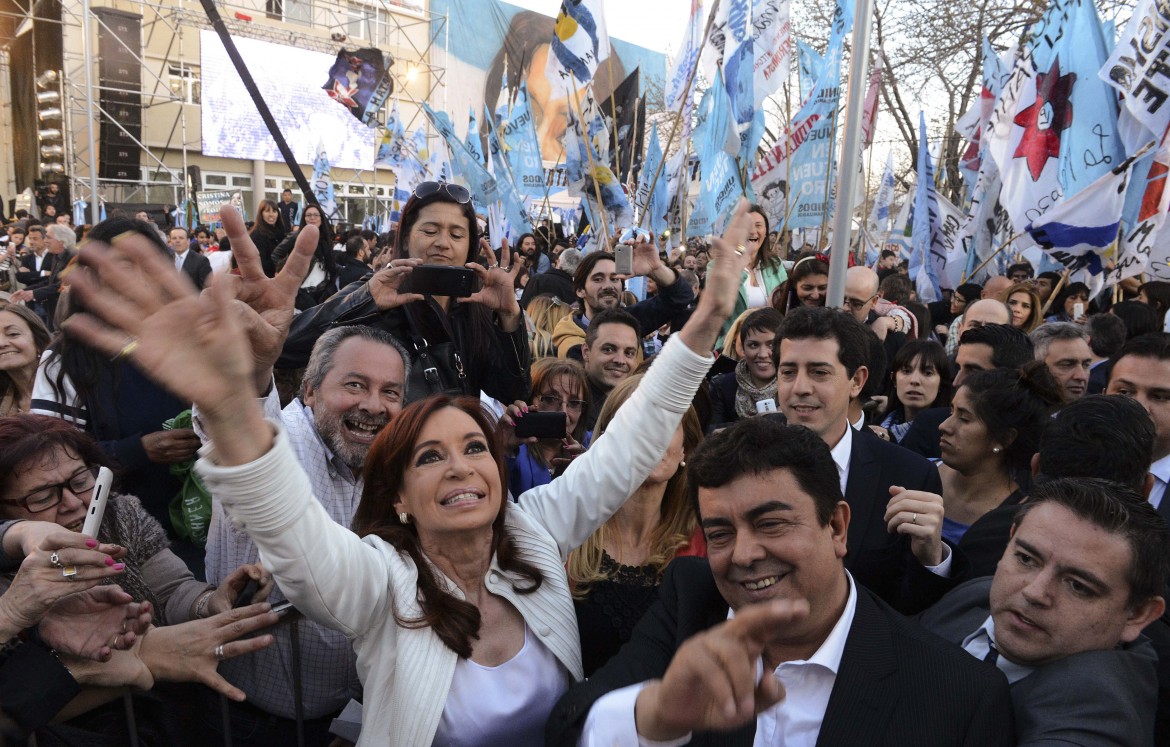Argentina elections
Cristina Kirchner’s long shadow
The legacy of kirchnerism

Que se vayan todos! It was December 2001, and the entire Argentine leading class had zero credibility.
President De la Rúa had unleashed a wide repression in an attempt to stop the social turmoil that was shaking the country, at its highest after the great neoliberal dispossession. The massive privatizations led by Menem in the ‘90s, under the Washington Consensus, had already destroyed the national financial and productive system. This proved to be an advantage for the metropolitan hoarding centers, while the state lost its monetary autonomy with the fixed exchange rate to the dollar.
In spite of an initial economic boom due to the influx of foreign investment, the country was infected with the financial crisis that shook the middle of the decade, from Mexico to Indonesia to Russia. The IMF provided a bridge loan to the country, with specific austerity measures that caused a banking paralysis and exorbitant unemployment: In a short time, Argentina became the foretold story of today’s Europe.
Que se vayan todos! The piquetero movement blocked the streets, and a popular alternative started to take shape from the district assemblies and the occupied and self-managed factories. And one after another, the leaders of the neoliberal clan that had driven the country into catastrophe fell down.
De la Rúa fell. Then the interim president, Duhalde, fell. And in the 2003 presidential elections, Menem, who was in bed with the United States before indebting the country to austerity, fell too.
But not everybody left. Néstor Kirchner remained in his seat, a sureño lawyer committed to the defence of civil rights. With a history of militant participation in the peronist movement against the dictatorship, he lived in a symbiotic relationship with his wife Cristina Fernández.
The kirchnerism movement, which started with Néstor’s election and continued with his wife’s presidential terms, first of all meant a profound redefinition of the nation-state, perfectly aligned with the experiences of other Latin American countries on the brink of the millennium.
In response to different political traditions and cultural baggage, the neo-populist movement has successfully led countries out of the dictatorial state to the post-neoliberal state: The construction of the Bolivarian state in Venezuela, the Integral State in Bolivia and the National Populist state in Argentina are all results of the converging process of rebalance between the market-oriented elite and the popular movements.
Kirchnerism has promoted the reappropriation by the state of its own autonomy in terms of finance, energy, assistance, education and infrastructure. The guidelines of the national economy have been: marked state intervention, huge salary increases, restructuring of foreign trade and a tight control on capital.
The last significant act of Cristina’s presidency is the creation of a bill that requires the consensus of two-thirds of Parliament to start the privatization process in strategic sectors. In spite of threats from vulture speculative funds, the cycle-breaking policies have allowed the government to pay back debt accumulated after the default. Even though it is true that the tireless search for Chinese partnerships has excessively linked Argentina’s fate with Beijing’s, the direct stimuli to the internal market seems to have partially corrected the cooling of foreign demand.
Concurrently, there has been a significant cultural action to redefine the patriotic space and national culture in progressive terms. The populist movement has reappropriated the word “homeland” in the everyday arena, after the leading classes had facilitated the hoarding of capital in the metropolitan centers for over 40 years in the name of national defence against the red threat.
The bequest of Peronism was the critical re-evaluation under the national-populist optics of the organic intellectuals in the kirchnerist space. The historic memory of the dictatorship’s martyrs and the Madres de Plaza de Mayo are still significant in today’s Argentina, while the authors of the Plan Condor are chased with a zeal unparalleled in the Southern Cone.
The construction of the national-populist state moved in parallel with a stronger role of Argentine leadership in the different regional and sub-continental integration processes. The most significant act of the political rebirth of the Patria Grande was the rejection by Chávez, Kirchner, Lula and Tabaré Vázquez of the Free Trade Area of the Americas continental integration project promoted by Bush Jr., during the Mar del Plata 2005 summit.
Since then, amid crisis and contradictions, Latin American cooperation has evolved into a compact bloc confronting the hegemonic presence of Washington, creating the conditions of the American Canossa with regards to socialist Cuba.
The kirchnerist government has interacted with several actors in the wide populist front of society, like the traditional social movement that came up from the ashes of the big 2001 revolt; the militant groups of the ‘70s, re-animated after the night of dictatorship and marginalization during the neoliberal period; the youth activism; and a measured and challenging compromise with the local peronist nobility.
The latter is maybe the source of the most relevant contradictions. On one side, kirchnerism mined the whole bequest of peronism, and this allowed it to stabilize its national role and count on an organizational structure for the entire Fronte. On the other hand, the direct affiliation to menemism of a large group of Justicialist leaders casts a shadow on the future of the movement.
The candidate elected at the primaries, the ex-governor of the Buenos Aires province Daniel Scioli, has been decidedly cool in regards to the most incisive measures of Cristina’s government, and he is known as the most open to the needs of the traditional elites, among all leaders of the Frente para la Victoria. In order to balance Scioli’s figure out, Carlos Zannini was elected as his VP, a figure of pure kirchnerist militancy.
But the future of the national-populist Argentina will be irrevocably linked to the ability to hold the social bloc conjured by kirchnerism in the last decade, and the leadership of Cristina, still in place.
Originally published at http://www.ilmanifesto.info/argentina-il-vento-nuovo-corre-sul-filo/ on 2015-10-23
